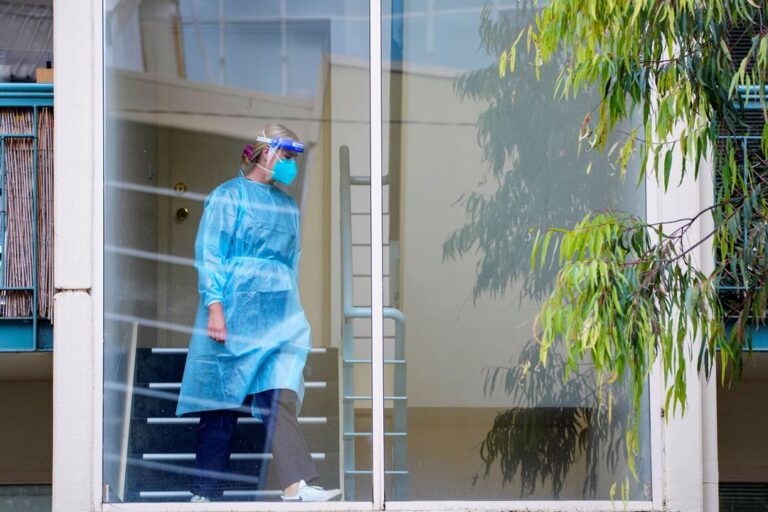
SYDNEY, (Reuters) – COVID-19 infections in Australia’s Victoria state hovered near record levels on Friday as authorities stepped up the pace of vaccinations in hopes of easing restrictions with more than half the country’s adult population fully vaccinated.
Australia is grappling with a third wave of infections from the highly infectious Delta variant that has led to lockdowns in its two largest cities, Sydney and Melbourne, and the capital, Canberra, affecting nearly half the country’s 25 million people.
These tough curbs triggered anti-lockdown protests in Melbourne, Australia’s second-largest city, for three straight days.
Police have said they would continue to provide “a highly visible presence” across the city over the next few days.
As most of Australia’s southeast remains under strict stay-at-home restrictions, virus-free Western Australia is gearing up to host the Australian Rules football Grand Final for the first time, in front of 60,000 fans at Perth Stadium on Saturday.
Melbourne, which had hosted every Grand Final since 1898, was the sport’s spiritual home until the pandemic forced a shift to Brisbane last year.
Victoria on Friday reported one new death and 733 new infections, its second biggest daily rise in the pandemic, down from the record high of 766 on Thursday. Most cases were detected in Melbourne.
Both New South Wales (NSW) and Victorian leaders have pledged more freedom to residents once full vaccinations in people above 16 reach 70%, expected next month. So far, 57% have been fully vaccinated in NSW and 46% in Victoria.
Australia’s immunisation drive got a boost on Thursday with the arrival of Moderna (MRNA.O) doses in about 1,800 pharmacies across the country, becoming the third vaccine to join the rollout along with Pfizer (PFE.N) and AstraZeneca (AZN.L) shots.
Even with the fast-moving Delta outbreak, Australia has largely avoided high numbers seen in many comparable countries, with some 93,000 cases and 1,197 deaths, and the death rate is lower than last year because of higher vaccination rates.






